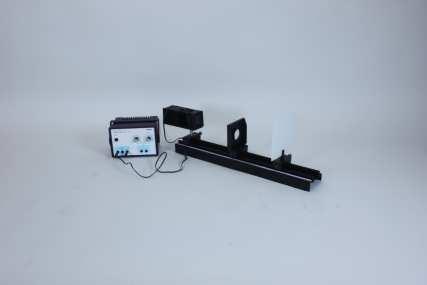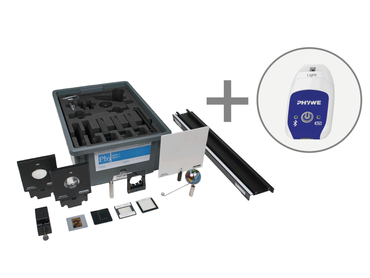Principle
The theoretical derivation of the equation for the magnification dose not normally cause problems. It is therefore advisable to employ the experiment as a confirmation experiment. Then the students will have sufficient orientation as to the goal of the experiment from the very beginning. As a consequence, after having experimentally determined the 4 values, they will know that it is important to calculate the two ratios B/G and b/g and to compare them.
Benefits
- Multifunctional light box - All-in-one: Can be used for geometric optics on the table, colour mixing and on an optical bench
- Extension with others sets at anytime, no additional light sources needed, recognition value for students
Tasks
How can the size of images formed by lenses be calculated? Determine which correlations exist between the object distance g, the image distance b, the object size G and the image size B for images formed by a convex lens.



